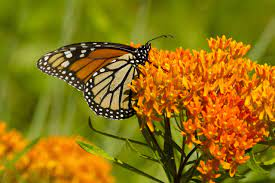
The terms used to describe plants can be confusing, so here are some helpful definitions:
Native: A plant that has evolved and occurs naturally in a particular region and thus provides ecological benefit. What NNGI is all about!
Non-native: Plants that have been introduced to an area by humans and therefore at best don’t provide much benefit to the environment, and at worst actually harm our ecosystem.
Invasive: This term is used to describe plants that grow aggressively and crowd out beneficial native species. Japanese knotweed, lesser celandine, butterfly bush*, and English ivy are all examples of invasive plants.
Aggressive: A native plant that spreads easily can be described as aggressive, but never invasive. This might be a quality you appreciate or not. If you like a native plant that might be considered aggressive but you don’t want it to take over your garden, you could plant it in a pot to keep it contained.
One of the things that we love about the native plant movement is that we don’t need to be purists in order to be responsible gardeners. As long as we all continue to add native plants to our landscapes and avoid or remove non-native invasive plants, we are contributing to a healthier environment. If there are non-native plants that you love, but that aren’t invasive, keep them and enjoy them!
*You might have been surprised to see butterfly bush listed as an invasive, non-native plant. Although butterflies love them, butterfly bushes do not provide much nutrition, like dining at a fast-food restaurant. They cannot serve to host eggs or feed caterpillars. And they can spread to other places, serving to crowd out beneficial natives – plants that host a wide variety of insects.
You may not have seen them spread on your own property, but we cannot always witness how seeds and plants are dispersed because we cannot see where birds drop seeds in their droppings. Our yards do not have walls and we are all connected- which is pretty amazing to consider!